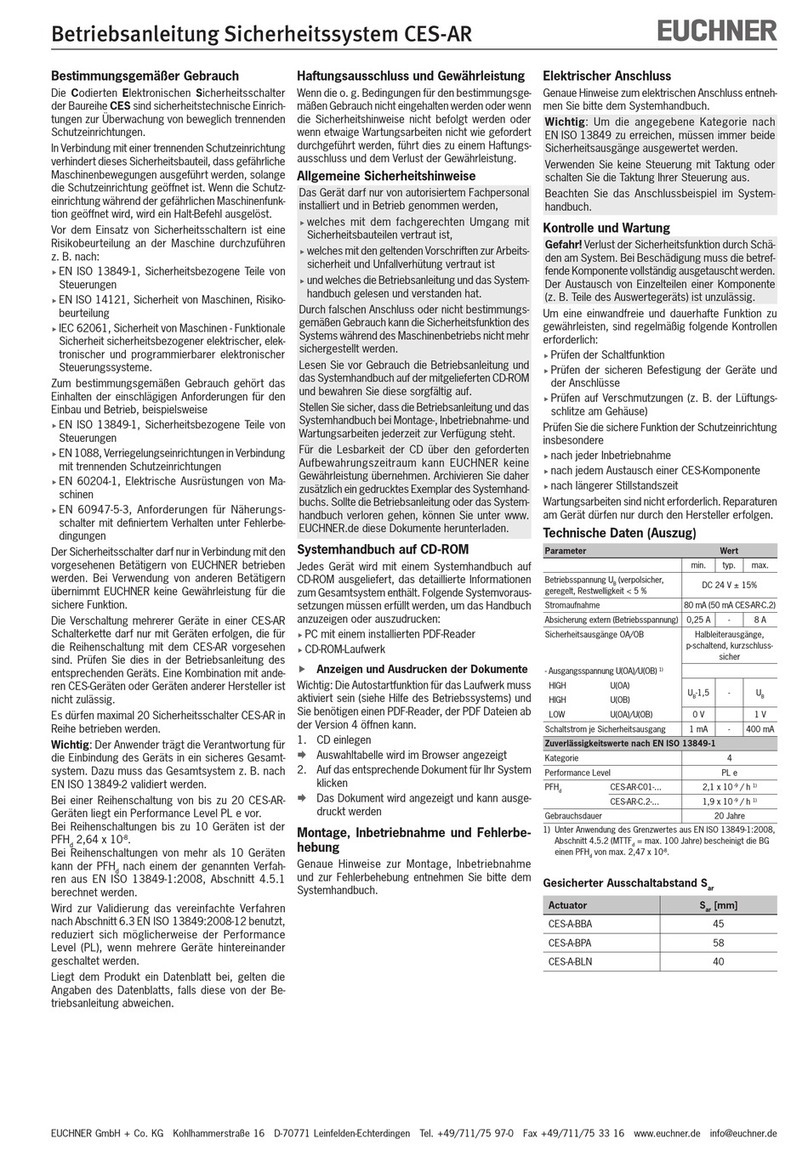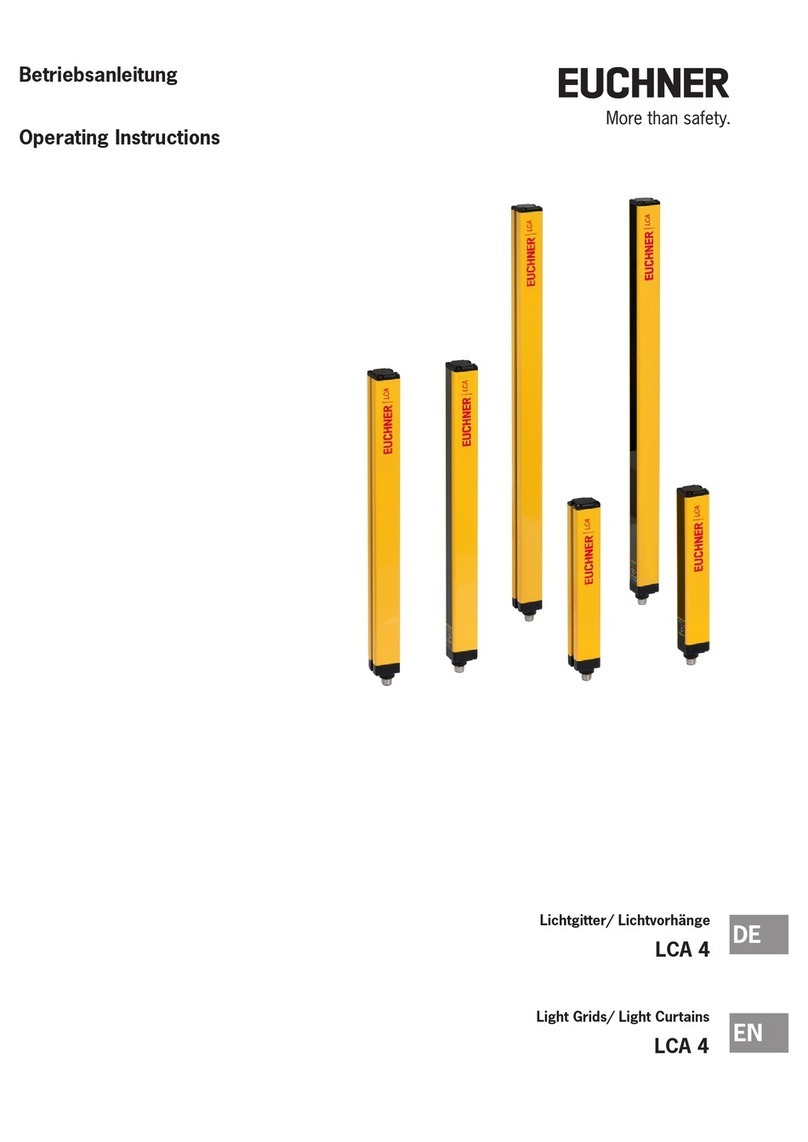Operating Instructions
Safety Systems with Locking ESL-IH-AR
2(translation of the original operating instructions) 119138-05-10/15
Contents
1. About this document............................................................................................. 4
1.1. Scope............................................................................................................................................4
1.2. Target group ..................................................................................................................................4
1.3. Key to symbols...............................................................................................................................4
1.4. Supplementary documents ..............................................................................................................4
2. Correct use .......................................................................................................... 5
3. Description of the safety function .......................................................................... 6
4. Exclusion of liability and warranty ......................................................................... 6
5. General safety instructions.................................................................................... 6
6. Function............................................................................................................... 7
6.1. Components...................................................................................................................................7
6.2. Door monitoring output ...................................................................................................................7
6.3. Switching states .............................................................................................................................8
7. Mounting.............................................................................................................. 9
7.1. Changing the connection .................................................................................................................9
7.2. Attachment to the door prole .......................................................................................................10
8. Electrical connection .......................................................................................... 11
8.1. Notes about .........................................................................................................................12
8.2. Safety in case of faults..................................................................................................................12
8.3. Fuse protection for power supply...................................................................................................12
8.4. Requirements for connection cables...............................................................................................12
8.5. Maximum cable lengths.................................................................................................................13
8.5.1. Determining cable lengths using the example table.............................................................13
8.6. Connector assignment safety system ESL-I-AR ................................................................................14
8.7. Connector assignment Y-distributor................................................................................................15
8.8. Connection of a single AR device ...................................................................................................16
8.9. Connection of several devices in a switch chain ..............................................................................17
8.10. Information on operation on an AR evaluation unit............................................................................18
8.11. Notes on operation with safe control systems.................................................................................18
9. Setup ................................................................................................................. 19
9.1. LED indicators..............................................................................................................................19
9.2. Teach-in function for handle module (only for unicode evaluation) ......................................................19
9.2.1. Preparing device for the teach-in operation and teaching-in handle module ...........................19
9.2.2. Teach-in function with series connection, replacing and teaching in device ............................20
9.3. Functional check...........................................................................................................................21
9.3.1. Mechanical function test ...................................................................................................21
9.3.2. Electrical function test......................................................................................................21
































